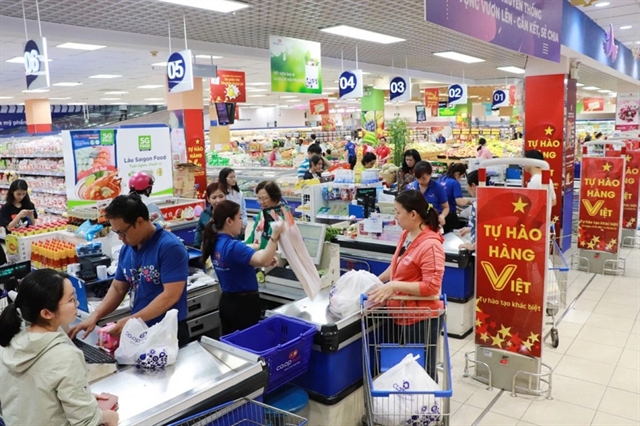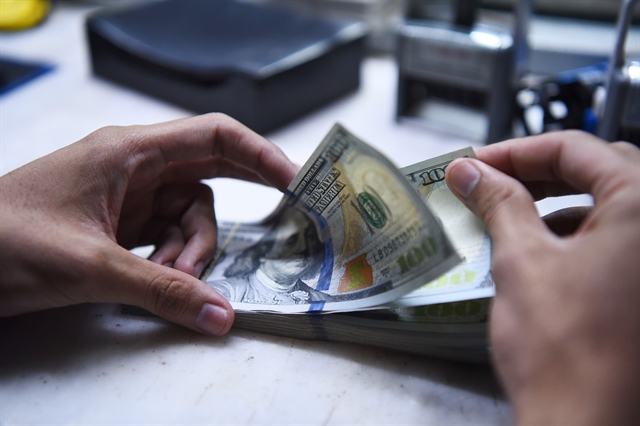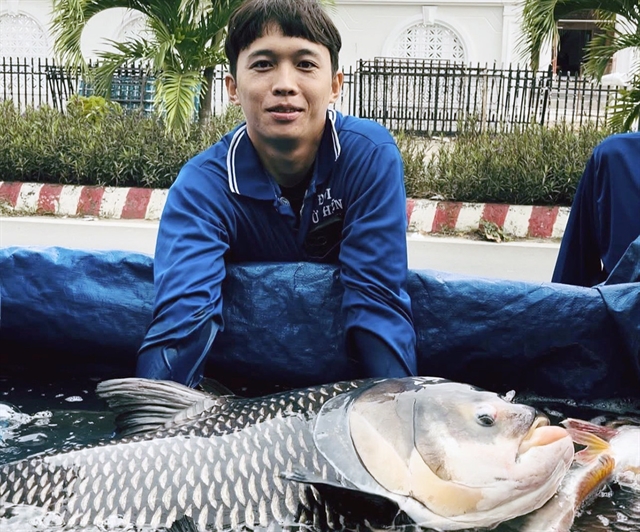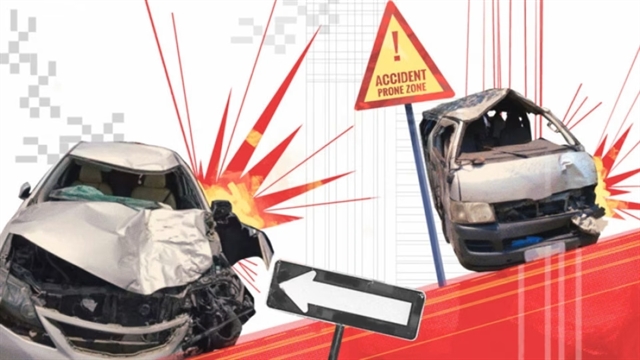 Life & Style
Life & Style

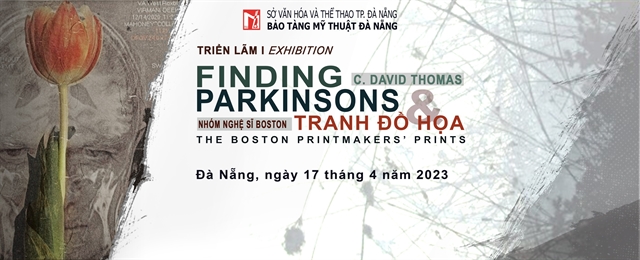 |
| The backdrop of the digital print exhibition of David Thomas, a US artist and Vietnam War veteran, and others artists from Boston. The event takes place at Đà Nẵng City’s Fine Arts Museum. Photos courtesy of Đà Nẵng Fine Arts Museum |
ĐÀ NẴNG — Seventy digital prints by David Thomas, an artist and Vietnam War veteran, are being showcased at the Fine Arts Museum in the central city along with the works of other Boston-based artists.
Titled Finding Parkinsons, the exhibition features a section dedicated to Thomas's works, while another section, titled Peace, Love, and Understanding, displays 37 paintings by members of the Boston printmakers.
The Fine Arts Museum has announced that Thomas and five other Boston Printmakers members, namely Susan Denniston, Margo Lemieux, Colleen MacDonald, Marilyn Mase and Carolyn Musket, are representing the Boston-based art group at the exhibition.
Thomas, born in 1946 in Portland, Maine, the US, joined the US Army in the war in Việt Nam as a combat technical assistance mission in the Central Highlands region from 1969-70.
He returned to the US in 1970 to continue art and created artworks of the Vietnamese people.
,%2020x%2020%20%20(cm)%20-%20in%20k%E1%BB%B9%20thu%E1%BA%ADt%20s%E1%BB%91%20-%202021%20-%20David%20Thomas.jpg) |
| 'Untitled', a digital print by David Thomas. |
Thomas visited Việt Nam in 1987, and the trip sped up his aspiration for him to build the Indochina Arts Partnership – a foundation that helped develop cultural exchange between Việt Nam and the US over the past 30 years.
He was awarded the medal for the course of Vietnamese Culture in 1999 and a campaign medal for Việt Nam’s fine arts by the Việt Nam’s Fine Arts Association in 2010.
He learned that he had Parkinson’s disease in 2015, most likely due to his exposure to Agent Orange during the war in Việt Nam. Parkinson’s disease affects the nerve cells in the brain that produce dopamine. Dopamine is a neurotransmitter that enables messages between nerve cells, an introduction on Thomas released.
“On December 14, 2020, I saw my brain for the first time," Thomas revealed. "My neurologist had ordered an MRI scan of my brain to check on the progress of my Parkinson’s disease. After the scan was complete, I asked the technician for a CD of the ‘slices’ of my brain.
"I wasn’t exactly sure what I would do with them but was curious about what I would find on that CD. After looking at several hundred slices, I became fascinated with the idea that everything about me and my entire life was somehow present in this incredibly complex organ.
"I suddenly had a new subject to explore in my art. I didn’t want simply to illustrate my brain, so I began this series by taking selfies of my face from different angles and expressions and then combined these with the MRI slices. It was fascinating to see my face and brain becoming one image and battling each other for dominance.”
Thomas continued: “When I returned from my year in Pleiku City (Gia Lai Province), I wanted to express my feelings about that year before they faded into the background.
"My tour in Vietnam had changed my life. I was compelled to find a way to express the asymmetry of the effects of the war on the US and on Việt Nam.
"We mourn our more than 58,000 American soldiers killed in Việt Nam while they mourn the more than two million civilians killed in Việt Nam, Laos and Cambodia. As a result of chemicals sprayed and high tonnage of bombs dropped by US military, this number will continue to increase in Việt Nam for many decades if not centuries."
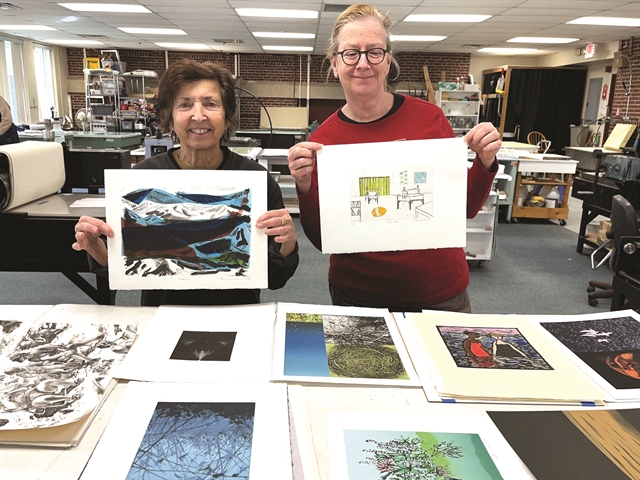 |
| Marilyn Mase and Colleen MacDonald, two artists from Boston, the US, prepare prints for exhibition in Đà Nẵng. |
"The purpose of this exhibition and catalogue is to ask questions about the function and limits of this incredible organ," Thomas said. "My desire is that these images will inspire you to think more about your own brain and the way you arrive at conclusions.
"Our brains are, at best, the combination of what we inherited from our ancestors combined with what we have added since our birth. What we don’t know is how this will all be used during our lifetime.
"Việt Nam reports that some 400,000 people have suffered death or permanent injury from exposure to Agent Orange. It is also estimated that 2,000,000 people have suffered from illnesses caused by exposure, and that half a million babies were born with birth defects due to the effects of Agent Orange."
Thomas went on: "Little did I know when I returned to Việt Nam in 1987 that I would spend the rest of my life trying to ease the pain caused by the American war there, to educate Americans here about the real tragedy of our invasion of Việt Nam and to humanize the people we had dehumanized in order to kill and poison them.
"I have been invited into the homes of our former enemy many times only to learn how much we have in common, not that which divides us. We have laughed and cried together and shared many beautiful memories and hopes for the future.
"I am concerned that the progression of my particular Parkinson’s may not allow me to complete this series. Will my worsening cognitive and physical symptoms prevent me from finding some answers to the questions I have raised here? Or will this increase in symptoms simply become additional material for this series? Only time will answer that question.”
The US government has consistently stated that no scientific evidence links Agent Orange/dioxin to adverse health effects found in Việt Nam.
During the year I spent on Engineer Hill, I never really paid much attention to why nothing grew in this rich volcanic red soil of Việt Nam’s Central Highlands," Thomas recalled.
"I did know my unit was also responsible for killing the vegetation one hundred metres on each side of the roads we were constructing and at all work sites. This was primarily to take away the jungle growth where snipers and enemy soldiers could hide. We were told this would keep us safe.”
The exhibition opened on April 17 and will last till April 21. Free entrance for all visits at the museum at 78 Lê Duẩn Street.
Đà Nẵng is home to more than 5,000 Agent Orange victims, of which 1,400 are children, according to the Đà Nẵng City Association for Victims of Agent Orange (DAVA).
Different supports from donors and volunteers have been made in helping children with difficulties and AO victims in the city.
In 2014, the Harris Freeman Foundation helped build the detoxification centre for Agent Orange victims in Đà Nẵng. — VNS

